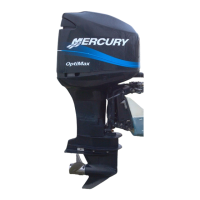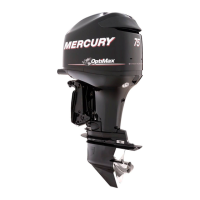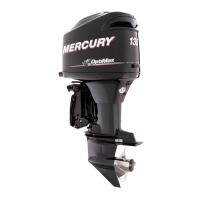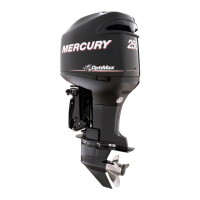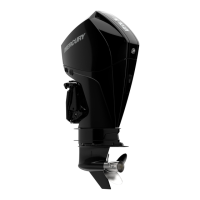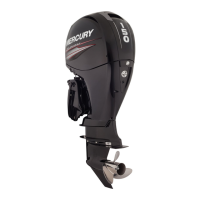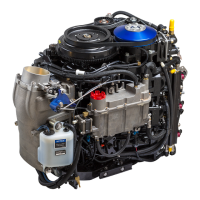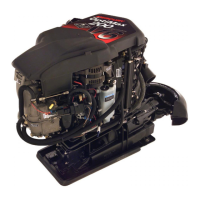FEATURES AND CONTROLS
49
• The term trim generally refers to the adjustment of the
outboard within the first 20° range of travel.
• The term tilt generally refers to adjusting the outboard further
up out of the water.
With the engine turned off, the outboard can be tilted out of the
water. At low idle speed, the outboard can also be tilted up past
the trim range to permit, for example, shallow water operation.
Power Trim Operation
With most boats, operating around the middle of the trim range will
give satisfactory results. Trimming your outboard all the way in or
out may improve performance, but cause some potential control
hazards.
!
WARNING
Avoid possible serious injury or death. When the outboard is
trimmed in or out beyond a neutral steering condition, a pull on
the steering wheel in either direction may result. Failure to keep
a continuous firm grip on the steering wheel when this condition
exists can result in loss of boat control as the outboard can turn
freely. The boat can now spin out or go into a very tight maximum
turn which, if unexpected, can result in occupants being thrown
within the boat or out of the boat.
Consider the following lists carefully.
Trimming in or down can:
• Lower the bow of the boat.
• Result in quicker planing off.
• Generally improve the ride in choppy water.
• Increase steering torque or pull to the right (with the normal
right-hand rotation propeller).
• In excess, lower the bow to a point at which the boat begins
to plow with the bow in the water while on plane. This can
result in an unexpected turn in either direction called bow
steering or over steering if any turn is attempted, or if a
significant wave is encountered.
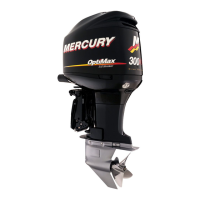
